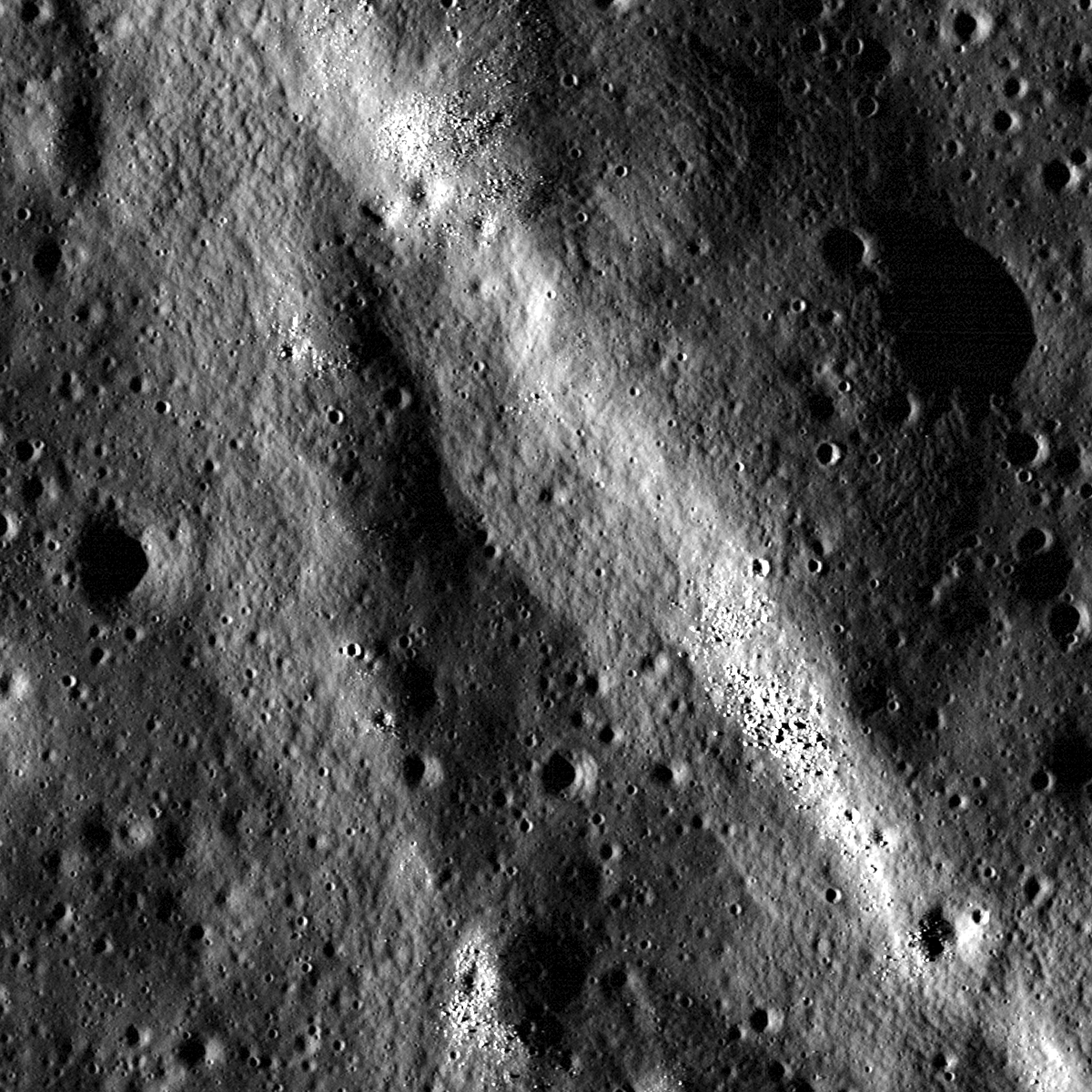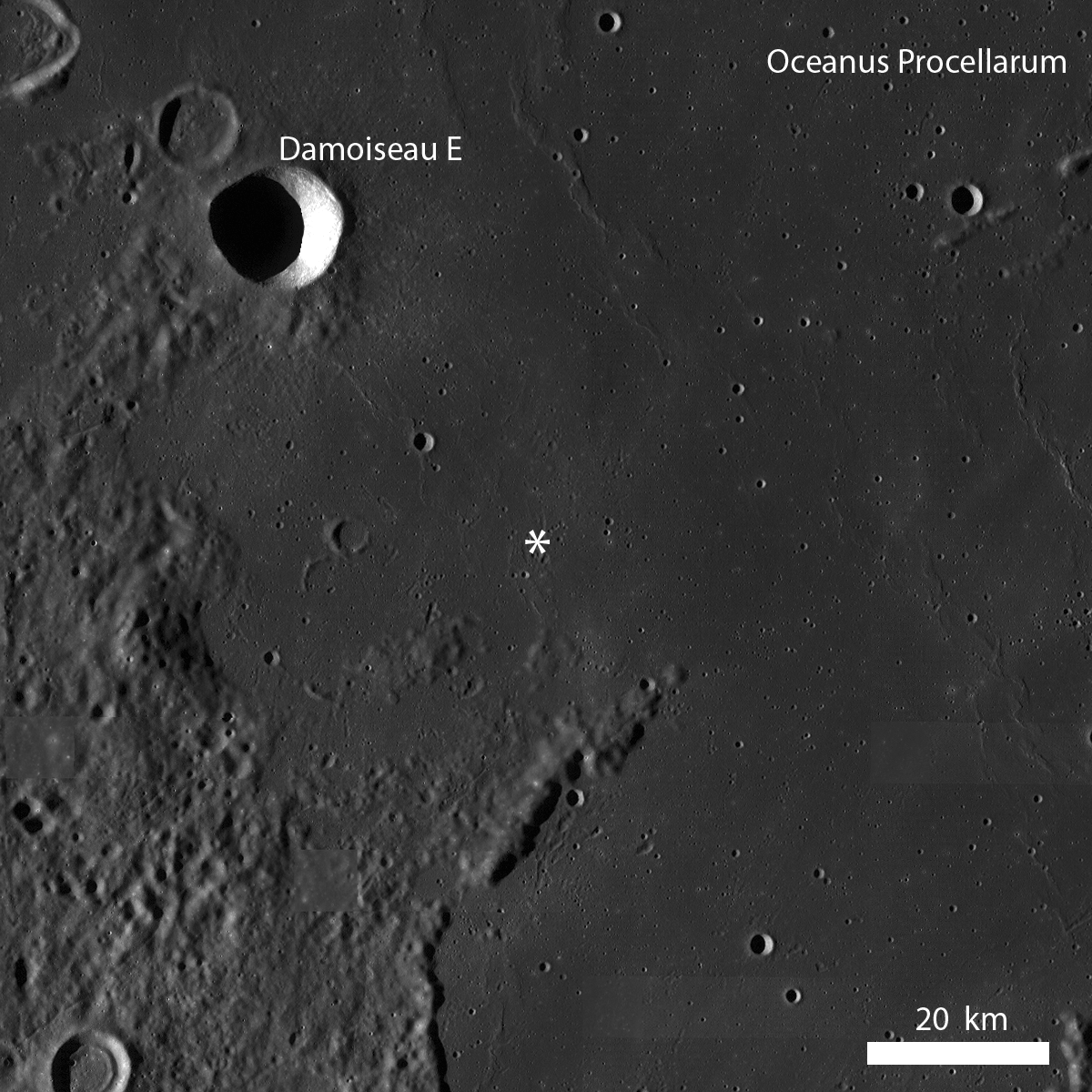
Wrinkle ridges are fascinating tectonic features that are the surface manifestations of contraction and faulting. They are prevalent in the mare and have a distinct broad, low-relief arch with a more steeply-sloped ridge superposed on the arch. Many wrinkle ridges observed in LROC NAC images have boulders located somewhere along the ridge crest. In many cases (but not all!), the boulders are eroding out of the wrinkle ridge. How do we know this? Look at the opening image and the boulder clusters perched on the ridge crest. Do you see any fresh impact craters nearby from which the boulders might originate? In this section of the ridge, the answer is no - so the boulders most likely originate from wrinkle ridge erosion.
Today's Featured Image highlights a bifurcation between two segments of a wrinkle ridge. The compressive stresses that produce faulting in the expansive lunar mare basalts are affected by both local, small-scale stresses (for example, a buried crater) and regional, large-scale stresses (for example, the effects of the weight of many meters of mare basalts extruded into one of the lunar basins). Such large-scale stresses probably influenced the wrinkle ridges observed in the LROC WAC context image (above), but the observation of a forked wrinkle ridge at the NAC scale probably means that smaller-scale stresses primarily influenced this wrinkle ridge. Perhaps there were pre-existing weaknesses in the local area where this ridge formed. Much less energy is needed to form a tectonic feature based around a pre-existing landform, like the rim of a buried crater mentioned above, and that could explain why wrinkle ridge splits into two (or joins, depending on how you look at it!). However, that is only one hypothesis explaining the forked wrinkle ridge - can you think of any other plausible hypotheses?
What do you think: is the wrinkle ridge splaying apart or are two separate wrinkle ridges joining together? Explore this feature in the full LROC NAC image!
Related Posts: Wrinkle Ridges in Aitken crater!
Bright ridge near Mons Hansteen
Boulder clusters on a ridge crest
Right Angle
Published by Lillian Ostrach on 26 April 2011
